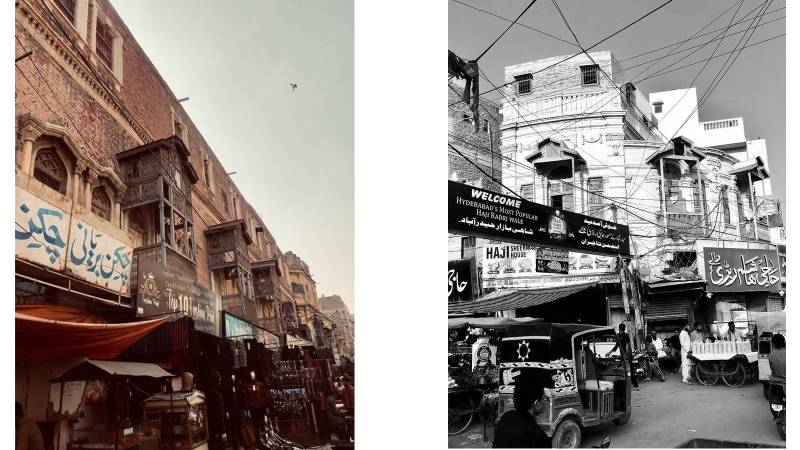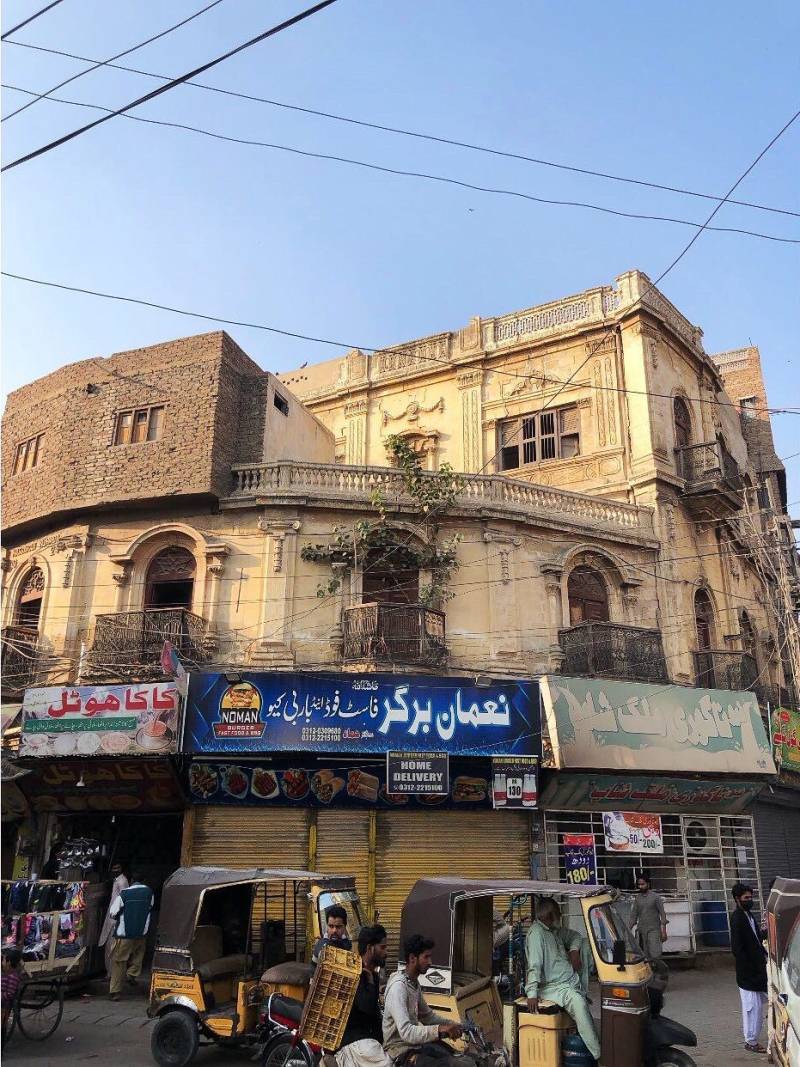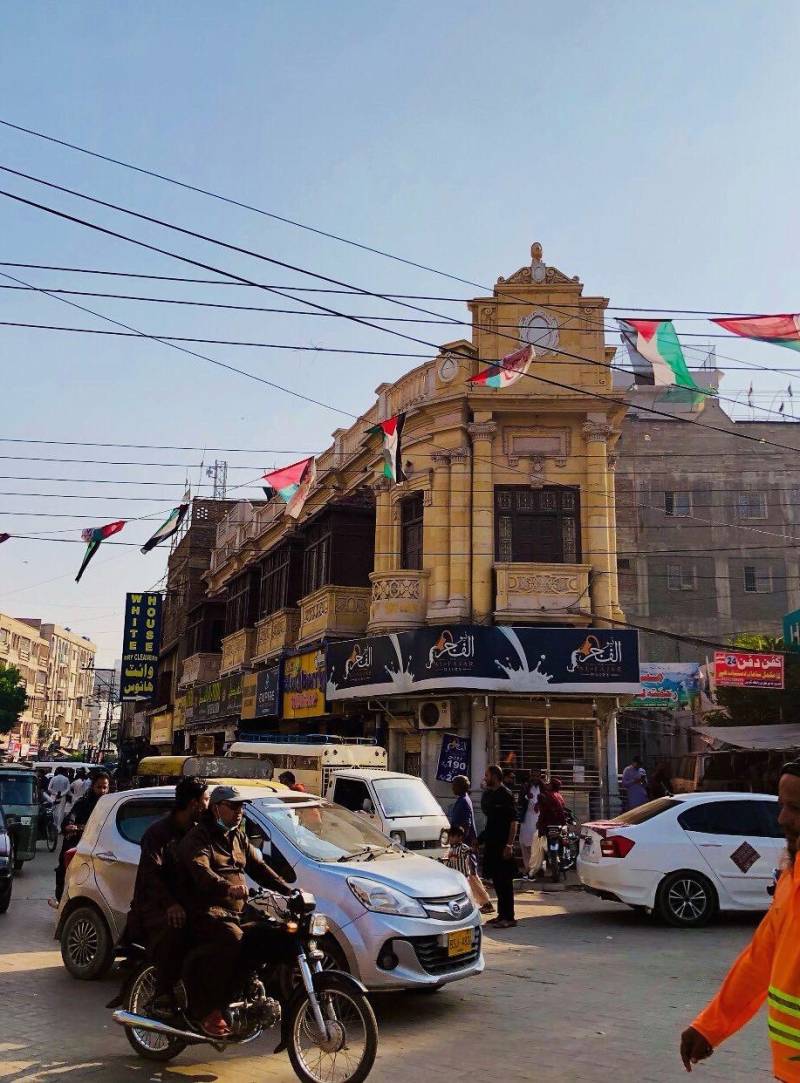
Hyderabad once known as the "Kalhoro Dynasty Nerunkot," encompasses numerous neighbourhoods and areas steeped in historical significance. Even though Hyderabad came to be known as the "City of the Shining Path," enclaves like Chhoti Ghati, Sary Ghat, Afandi Mohalla, Tilak Chari and others surrounding the sturdy fortress were once beautifully crafted locales but now face various challenges.
Heerabad, renowned for its unique architecture, spacious lanes, and cleanliness, has been famous for its distinct construction style for decades. Its development traces back to 1914, attributed to the leadership of "Heeranand Khemchand," president of the Municipal Committee, with its population swelling after completion in 1920. Initially inhabited by the "Amil Brotherhood" and "Bhai Band," communities affiliated with the Lohana Hindu fraternity, this area had ties to the Shahi Darbar during the Kalhoras and Talpurs eras. Even during British colonial rule, following the decline of the Mirs, they held significant positions. Today, Amil Colony in Hyderabad bears witness to their legacy, with many professionals in the district associated with the Amil Brotherhood.
Their presence extended beyond Hyderabad, reaching Khairpur, Larkana, and Karachi, among others. In the Gromandar area, the existing Amil Colony maintains ties with the same community (Amil Hindu Community).
While many Amil individuals found employment opportunities in European countries during a particular period, many returned to Hyderabad after relocating during World War II. The second segment of the Lohana Hindu community, known as "Bhai Band," comprised a Sindhi group engaged in business and trade. They dominated the steel industry and various other businesses in all commercial centres of Hyderabad, including Shahi Bazaar. Their business ventures extended to distant lands, importing essential commodities from raw materials, all meticulously handcrafted by artisans in Sindh, thus earning the moniker "Sindh Work," later known as "Sindh Worki," defining a distinct business class.

After the British annexation of Sindh in 1843, whenever the British required goods, they turned to the Bhai Band brethren, who supplied the needed items. Today, the buildings in the market area where they lived still stand. Hyderabad's expansion led to the comprehensive development of the market area, resulting in Tower Market's transformation into a significant commercial hub.
The Amil and Bhai Band communities jointly established a new neighbourhood connected to Kirthan Colony, Biraj Colony, Liaquat Colony, and Salout Paddi. Its construction drew inspiration from the architectural styles of renowned regions in seven major countries worldwide. Situated a short distance from Market Tower on Jail Road, this area is one of the well-known neighbourhoods in Hyderabad.
It is worth noting that following the defeat of the Talpurs, under British rule, Hyderabad's area expanded, leading to the establishment of the Hyderabad Exhibition in the same locality, where the graves of the Talpur rulers are located. In 1914, with the construction of the tower in Hyderabad's central market and the installation of the clock tower, residents of the market area dispersed. As Hyderabad's development progressed with the construction of Tower Market slightly away from the central market, Bhai Band residents settled in this area. In the early 1900s, prevailing construction practices shaped the houses in Hyderabad, characterised by numerous windows and doors, spacious galleries, and elevated main doors. Additionally, each house had a gallery, wooden doors, and basement kitchens. The streets were wide, facilitating airflow, and were designed to accommodate pedestrian traffic.

During this period, every house in Hyderabad had roof ventilators, allowing cool air to enter and preventing a stagnant environment. After the creation of Pakistan, minority community members migrated to India but later resettled in cities like Karachi and Hyderabad in Sindh during the Muslim migration from India to Pakistan. Bhai Band residents took control of abandoned Hindu properties and assets in Hyderabad and Hirabad. Dadi Leela Vati, a renowned scientific and social figure of Sindh, continued to reside in this area even after the Hindu migration to India. Over time, changes began to occur in Hyderabad, and with its expansion, the streets of Hyderabad became narrower. Many houses that once defined this locality are now being replaced with multi-storey buildings, with some remaining locked after the departure of Hindus, their doors now adorned with rusty locks. Locals say these houses were leased to Indian immigrants by Kaleem, who, feeling threatened, vacated and locked them before moving elsewhere.
These grand buildings have remained vacant for years, their locks now rusty and unclaimed. No one is willing to occupy them, and property owners refrain from leasing them out. Hyderabad's unfortunate fate lies in the abandonment of its residences twice: first during the 1947 partition of India, when many Hindus locked their homes and migrated to India, and second during the linguistic disturbances of 1988. Many left, seeking refuge in safer areas of Hyderabad, leaving the area desolate.

